The ‘project tables’ is an installation of a (multi) project work environment for visual management and independent operating teams to organize communication and empower people to work together on the most important projects.
The ‘project tables’ organization is to visually monitor the development, continuously linked to the business strategy. This is how new challenging assignments are always on the table.
It is always clearly visible if projects are related and participants see in which part of a project they are involved and why.
A ‘project table’ focuses on an important theme (a product or service to be developed for example), connects leaders and teams at the work and forms core teams who decide how to work best in the context of a specific project. People can choose to participate in key projects and can start with little of information right away.
Therefor, the concept of ‘project tables’ is an alternative to project management that depends on rigid structures and procedures that delay the project startup because some information is not available or because the organization misses the right people.
Installing ‘project tables’ principles ensures pragmatic internal and external collaboration. The project table is a visual anchor to quickly set up a small team with little starting information, to connect directly to the work (focus management). The principle of the ‘project table’ directs a [core-team] to network, supported with existing or desired work methods /tools and ‘Visioning Development Planning’.
With a ‘project table setting’ you’ll convert meetings into constructive collaboration and forget about useless reports.
Installing ‘project tables’ is also:
>a natural way to optimize communication and collaboration (face to face and remote)
>to assign people to a project with focus on the product to serve a customer/user
>to have small core teams that manages an intern and extern network
>to get autonomous teams
>to create a mindset of involvement and responsibility
>to have equal importance to all people involved
>to build trust
>to have a (remote) space for conversation
>to collate Tech and No-Tech cultures
>make unannounced collaboration possible in a structured way [“bring people on the (remote) table to co-create” with focus on the project]
>to SEE other (related) projects
>to catch the dynamic of all projects together and to anticipate getting the work done.
>no more problems with ‘reservations’ for meeting rooms
>to “watch the product not the worker”
>to protect the team (no more ‘bosses’ override)
>stop interrupting and disturb people on their personal workplace
…
The structure and properties of a project work-setting
The Project Table Area
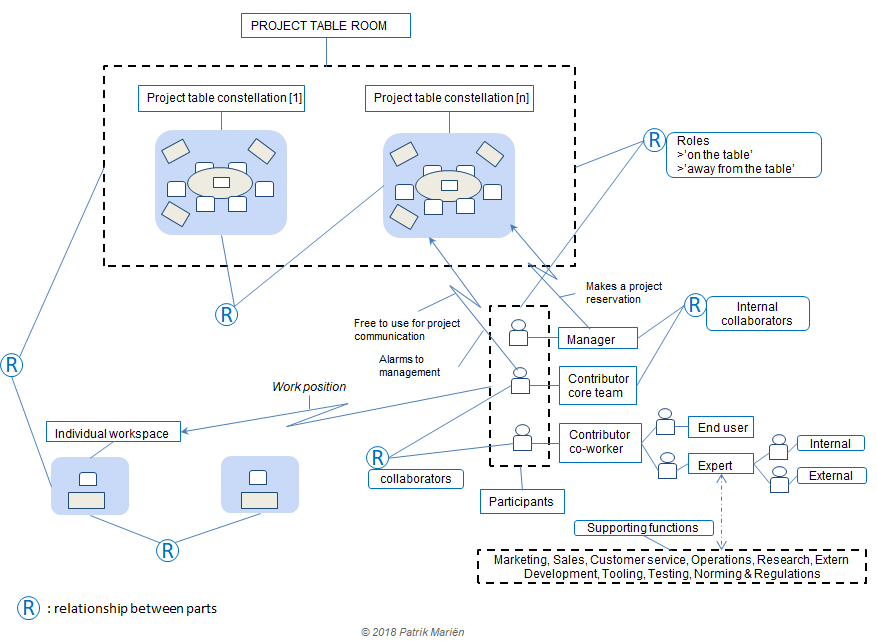
Landscape work environment for self-organizing teams.
| >makes visual management possible as a physical setting. [direct, immediate, visual feedback more accurate than reports with numbers] |
| >makes visual management possible as a virtual setting. |
| >relieves the manager of control. |
The Project constellation
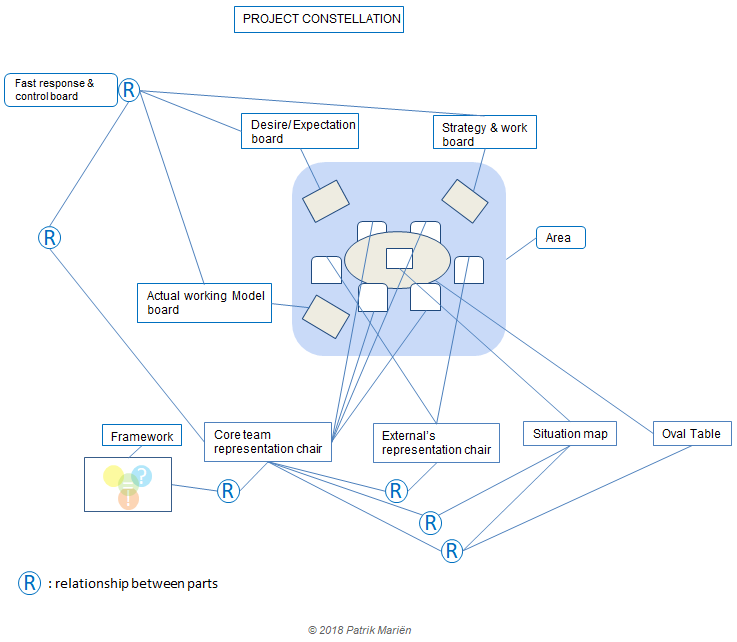
A visual anchor to organize projects as an open space to handle and think, to be safe with artefacts as visual statement of stability.
[an installation of physical and mental anchors as MIRRORS to reflect on the product and WINDOWS to explore how to approach]
| >invites you to participate with a certain behavior without the expectation that your personality has to change. |
| >shows how the multitude of information/ data gets a place. |
| >shows the roles that are strictly necessary to limit the team to a core-team (min. 2 to max. 4 persons who take responsibility for Design, Technology, Quality and Lead & Connect (orchestrating). |
| >shows what you want to achieve (expectation, criterion), what you are working on now, what has already been achieved. |
Systemic dynamics at the table
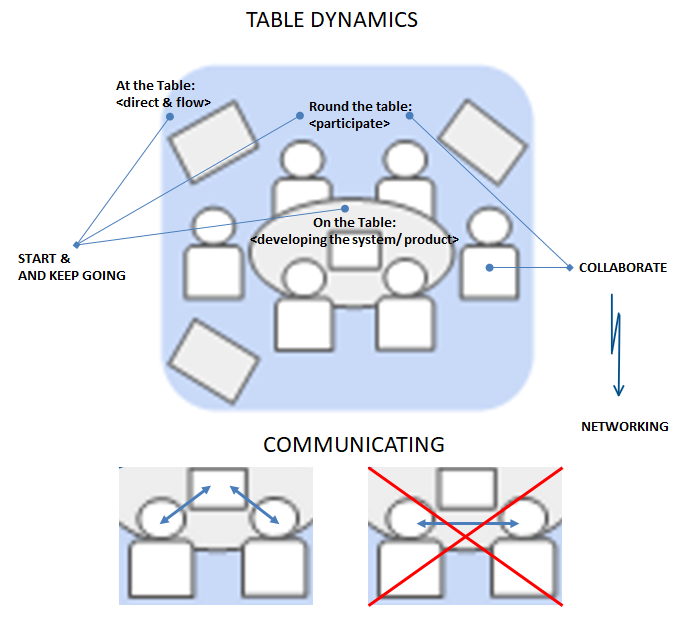
Concise frameworks are linked to a physical or virtual ‘project table’ to guide the core team in the organization and re-organization of the project. Collaboration is about the intention to participate, not a job title. The focus of communication is on the system to be developed, not on the participants. Networking is the normal
More benefits:
| Clear communication connected to the work. Every day your work starts from the recent model. Face mail, not e-mail is the dominant form of communication. |
| No blocking mechanism by procedures from the outside. |
| You, as a team member, are never alone with a problem. You are actually in on everything and participates in managing the project and the tasks. |
| Shared leadership with freedom to act. Leading from behavior to change from control to collaboration, working with different cultures. |
| You can orchestrate several complex projects simultaneously, keep rhythm and balancing priorities. |
| Relieve managers of useless activity [which does not lead to making things]. |
Everything has a place and meaning in a visual space for collaboration.
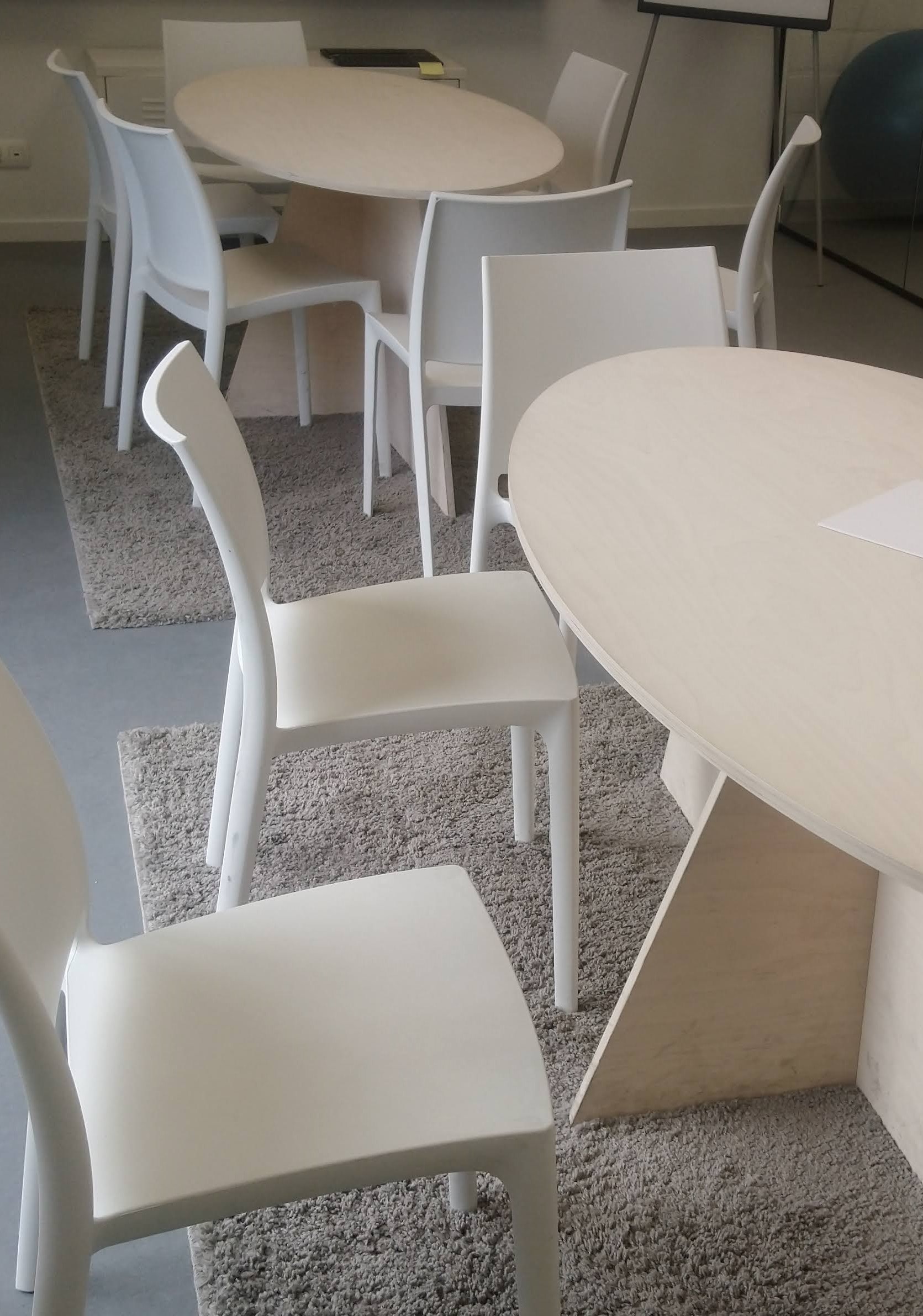
It is the visualization of communication during the teamwork that makes the result. The problem is never ‘you’ as a person.

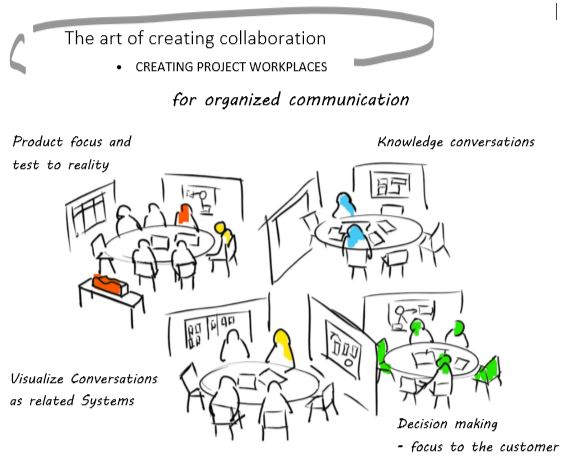
You can also apply the principles of the project table (s) remotely, I have a remote ready template in Plectica.